Apollo11
Latest
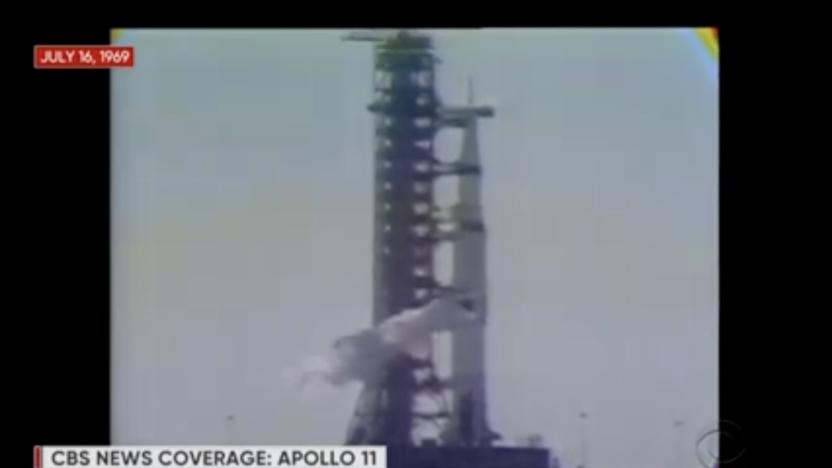
Watch CBS livestream the original 1969 Apollo 11 launch broadcast
If you weren't alive to witness the historic Apollo 11 mission, CBS has the next best thing. The US broadcaster is livestreaming the original broadcast from July 16th, 1969, letting you relive it as many of us saw it originally -- corny commercials included.

Google recreates Apollo 11's command module with AR
The 50th anniversary of our first successful trip to the moon is fast approaching. And Google, which rarely shies away from marking a significant moment in history, has laid out some of the ways in which it'll celebrate the half-century since Apollo 11 reached the lunar surface.

Lego is releasing an Apollo 11 Lunar Lander set for its 50th anniversary
The 50th anniversary of the human race's first trip to the moon is fast approaching, and Lego is marking the milestone with a NASA Apollo 11 lunar lander set. It'll be available June 1st for $100.

'Apollo: Missions to the Moon' documentary includes unheard audio
The 50th anniversary of the Apollo 11 Moon landing is coming up, and the National Geographic channel is determined to mark the occasion in style. It's premiering its Apollo: Missions to the Moon documentary in July, and this isn't just a rehash of the footage you've seen countless times. The documentary will cover the Apollo Space Program with raw media instead of narration, and some of it you likely haven't experienced. This includes "never-before-heard" mission audio plucked from 800 hours of recordings as well as video (from NASA, TV and home movies) newly transferred from 500 hours of film. Unless you were fortunate enough to witness events the first time around, this could easily feel fresh.

Report says NASA lost historical artifacts due to lax procedures
NASA's Office of Inspector General has released a new report detailing shortcomings in how the agency manages its historical items, The Verge reports. Over the years, NASA has apparently lost a number of assets, including a lunar soil collection bag, Apollo 11 command module hand controllers and even a lunar rover vehicle prototype.
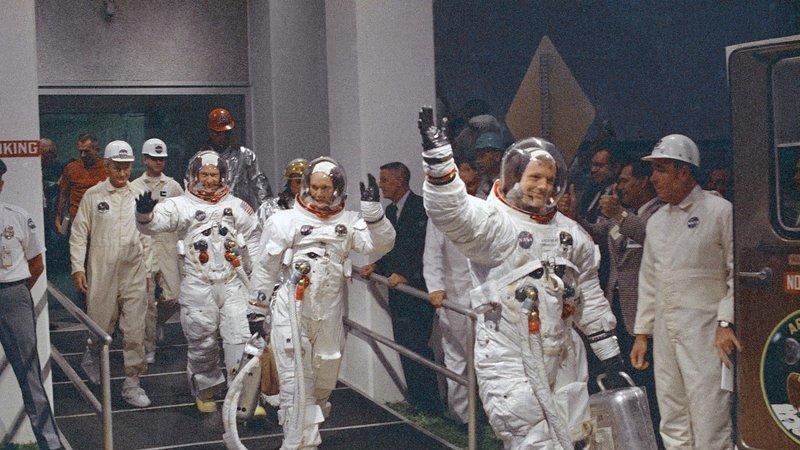
Neil Armstrong's collection of space artifacts goes up for auction
The first man to walk on the moon, Neil Armstrong, took several items with him on that historic trip, including a US flag, a United Nations flag, state flags and several medallions that were only available to NASA astronauts. He also apparently kept the original camera that recorded his moonwalk in a closet. Now, Armstrong's personal collection will be offered for sale in a series of auctions starting November 1st and 2nd in his home state of Ohio. Bids can be offered online, by phone or in person.
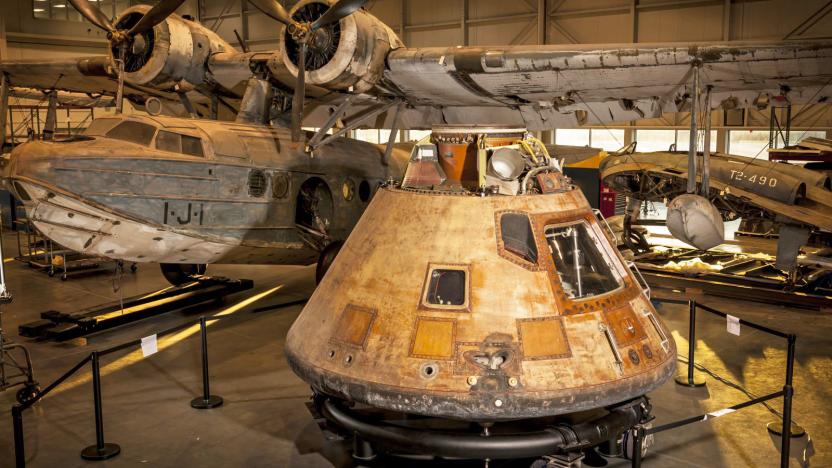
Apollo 11's crew capsule is going on tour
The Apollo 11 space capsule was displayed around the country in 1970 and 1971, shortly after it safely brought Neil Armstrong, Buzz Aldrin and Michael Collins back from their iconic 1969 moon trip. Since then, the command module has lived in the Smithsonian's National Air and Space Museum. Over the next few years, though, the spacecraft will get some fresh air as it embarks on its first national tour in nearly half a century.
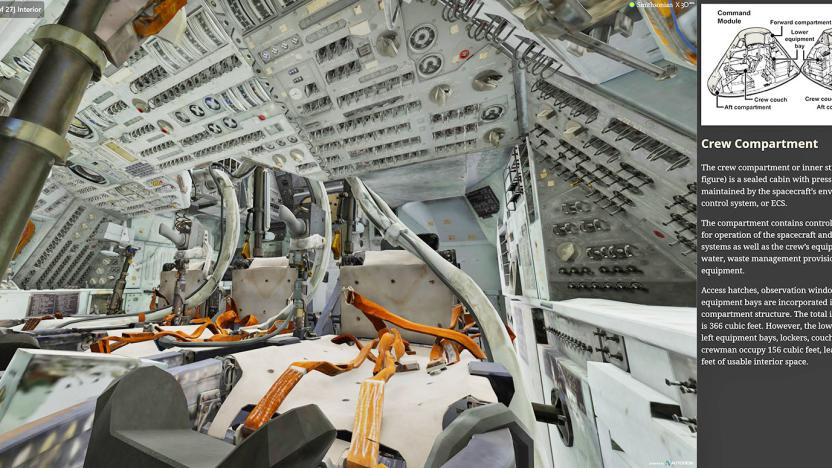
Explore a 3D scan of the Apollo 11 capsule
It's been 47 years since NASA first put a man on the moon and you can now get an idea of what astronauts Buzz Aldrin, Neil Armstrong and Michael Collins experienced. The Smithsonian Institute, working with Autodesk, has created a high-resolution 3D scan of "Columbia," the Apollo 11 command module that carried the astronauts to the moon. Using the online viewer (or downloading the virtual reality or 3D print files) you can visit the hidden corners of the module in much more detail than in person at the museum.
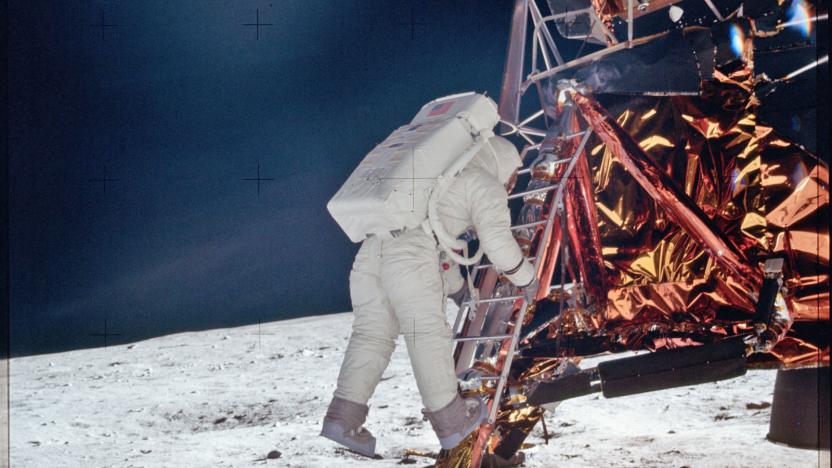
Apollo 11's source code is now on GitHub
The source code for Apollo 11's guidance computer has been available for a while (Google hosted it several years ago, for instance), but would you know how to find it or search through it? As of this week, it's almost ridiculously easy. Former NASA intern Chris Garry has posted the entire Apollo Guidance Computer source code on GitHub, giving you a good peek at the software that took NASA to the Moon. As Reddit users point out, it's clear that the developers had a mighty sense of humor -- line 666 of the lunar landing turns up a "numero mysterioso," and there's even a reference to radio DJ Magnificent Montague's classic "burn, baby, burn."

Ride along with Apollo 11 astronauts on launch day
David Whelan, lead developer for the kickstarted Apollo 11 VR Experience, announced on Wednesday that the game will be a launch title for three upcoming VR systems: the Oculus Rift, HTC Vive and PlayStation VR. The team is also reportedly working on a version for the Oculus DK2 dev set, however they have no current plans to port the game to the Samsung Gear.

Thousands of images from NASA's Apollo missions make it to Flickr
Over the past few months, NASA's been showing us a ton of stunning images of Pluto. And if you thought that was captivating, wait until you see what else has made it onto the web. On Friday, Project Apollo Archive took to Flickr to publish more than 8,400 high-resolution images from NASA's missions to the Moon. The image repository compiles photographs taken by Apollo astronauts during their trips, such as the emblematic Apollo 11 and the final Moon mission, Apollo 17. "Around 2004, Johnson Space Center began re-scanning the original Apollo Hasseelblad camera film magazines, and Eric Jones and I began obtaining TIFF (uncompressed, high-resolution) versions of these new scans on DVD," Kipp Teague, who heads up the project, said to The Planetary Society. "These images were processed for inclusion on our websites, including adjusting color and brightness levels, and reducing the images in size to about 1,000 dpi (dots per inch) for the high-resolution versions."

Smithsonian crowdfunds preservation of Neil Armstrong's spacesuit
If you've ever wanted to lend a hand preserving a piece of US history, now's your chance. The Smithsonian launched a Kickstarter campaign to gain support for restoring Neil Armstrong's Apollo 11 spacesuit for display at the Air and Space Museum in Washington, DC. While the artifact hasn't been on display since 2006, funds raised through the effort would allow it to be properly preserved ahead of the 50th anniversary of the Apollo mission in 2019 and for an upcoming "Destination Moon" gallery that's scheduled to open in 2020. The campaign is seeking $500,000 to cover the cost of the conservation project and a climate-controlled case for the suit. During the course of the preservation, the suit will get faded colors in the American flag patch stabilized to prevent further deterioration, stains removed and a careful cleaning to keep lunar dust in place. Funds will also be used to construct a digital version via 3D scan so that classrooms around the world can examine it in detail for the first time.

Neil Armstrong kept the original moon landing camera in his closet
If you were the first to set foot on a celestial body, wouldn't you keep a few mementos from the trip? The great Neil Armstrong certainly did -- including one of the most important gadgets in recent history. The Smithsonian National Air & Space Museum has revealed that the astronaut stored numerous items from the Apollo 11 moon landing in a closet at home, the highlight of which is undoubtedly the 16mm Data Acquisition Camera used to record the iconic moment he reached the lunar surface. Armstrong apparently held onto the camera and other "odds and ends" (as he told Mission Control) on the way back to Earth, and never mentioned them when he returned. Thankfully, you won't have much trouble seeing some of these artifacts in the near future. They're part of an exhibit at the museum, so you only have to book a trip to Washington, DC, by June 8th to see some of the technology that defined early space travel. [Image credit: Dane Penland, National Air and Space Museum, Smithsonian Institution]

NVIDIA's new GPU proves moon landing truthers wrong
Despite overwhelming evidence to the contrary, there still exist some people on planet Earth who believe it's the only celestial body humanity has ever walked upon. You've heard it before -- the moon landing was a hoax, a mere TV drama produced by Stanley Kubrick presented as fact to dupe the Soviet Union into giving up the space race. This deliciously ludicrous conspiracy theory has been debunked countless times, but now its advocates have one more refutation to deny: NVIDIA's Voxel Global Illumination tech demo. It's a GPU-powered recreation of the Apollo 11 landing site that uses dynamic lighting technology to address common claims of moon-deniers, and it's pretty neat.

Weekends with Engadget: Bose sues Beats, OS X Yosemite preview and more!
This week, we looked at the top 12 tablets available, watched Bose sue Beats, took the OS X Yosemite public beta for a test drive and reviewed the Oppo Find 7. Read on for Engadget's news highlights from the last seven days. Oh, and be sure to subscribe to our Flipboard magazine!

Engadget Daily: Facebook Save, Apollo 11's voyage to the moon and more!
Today, we archive posts with Facebook Save, remember Apollo 11's voyage to the moon, take a look at a Chromecast hack and ponder Whirlpool's new machine called Swash. Read on for Engadget's news highlights from the last 24 hours.

What you need to know about the Apollo 11 moon landing
Neil Armstrong, the first human being to set foot on another celestial body, misspoke his historic line. "That's one small step for man, one giant leap for mankind," as it turns out, was missing a crucial letter when Armstrong spoke it to a live audience back on Earth. What he was supposed to say as he placed his foot on the surface of Luna, the Earth's moon, was: "That's one small step for a man, one giant leap for mankind," thus highlighting the bigger picture of his small step onto the surface of the moon. Thankfully, the 600 million people watching weren't quite as pedantic as we are: The public easily overlooked the mistake, understood the meaning and let it go. Hey, the guy flew to the moon, right? Cut him some slack.

Revisiting the Apollo 11 Moon landing 45 years later
Today marks the 45th anniversary of the Apollo 11 mission where Buzz Aldrin, Neil Armstrong and Michael Collins made their trip to the Moon. Sure, you could say that there's likely more tech in our pockets than what was used to allow those three to meet their lunar destiny. For whatever reason, though, powering up an Android device or an iPhone isn't nearly as impressive as the fact that we shot humans into outer space and that they walked on the nearest hard surface. Join us as we celebrate that monumental event in the gallery below. For even more, be sure to check out the recent Reddit Ask Me Anything session with Aldrin. Spoiler: he thinks that Gravity is the best depiction of astronauts in zero-G he's ever seen. [Image credit: NASA]

Jeff Bezos expedition finds proof that recovered F-1 engine belongs to Apollo 11
Jeff Bezos' expeditionary team already believes that it's recovering Apollo 11 engines from the ocean, but it now has firm evidence that it's on the right track. The group has just found a serial number (pictured above) linking a salvaged thrust chamber to the fifth F-1 engine on Apollo 11's Saturn V rocket. While there's more identification work to go, the discovery shows that Bezos' conservation project is paying off. The timing is also rather convenient -- it gives us a fitting tribute to the NASA explorers that reached the Moon 44 years ago.

Pioneering astronaut Neil Armstrong dies at 82
It's a story that we hoped we'd never have to report. Neil Armstrong, the first man to set foot on Earth's Moon, has died at the age of 82 after complications from heart surgery three weeks earlier. His greatest accomplishment very nearly speaks for itself -- along with help from fellow NASA astronauts Buzz Aldrin and Michael Collins, he changed the landscape of space exploration through a set of footprints. It's still important to stress his accomplishments both before and after the historic Apollo 11 flight, though. He was instrumental to the Gemini and X-series test programs in the years before Apollo, and followed his moonshot with roles in teaching aerospace engineering as well as investigating the Apollo 13 and Space Shuttle Challenger incidents. What more can we say? Although he only spent a very small portion of his life beyond Earth's atmosphere, he's still widely considered the greatest space hero in the US, if not the world, and inspired a whole generation of astronauts. We'll miss him. [Image credit: NASA Apollo Archive]












